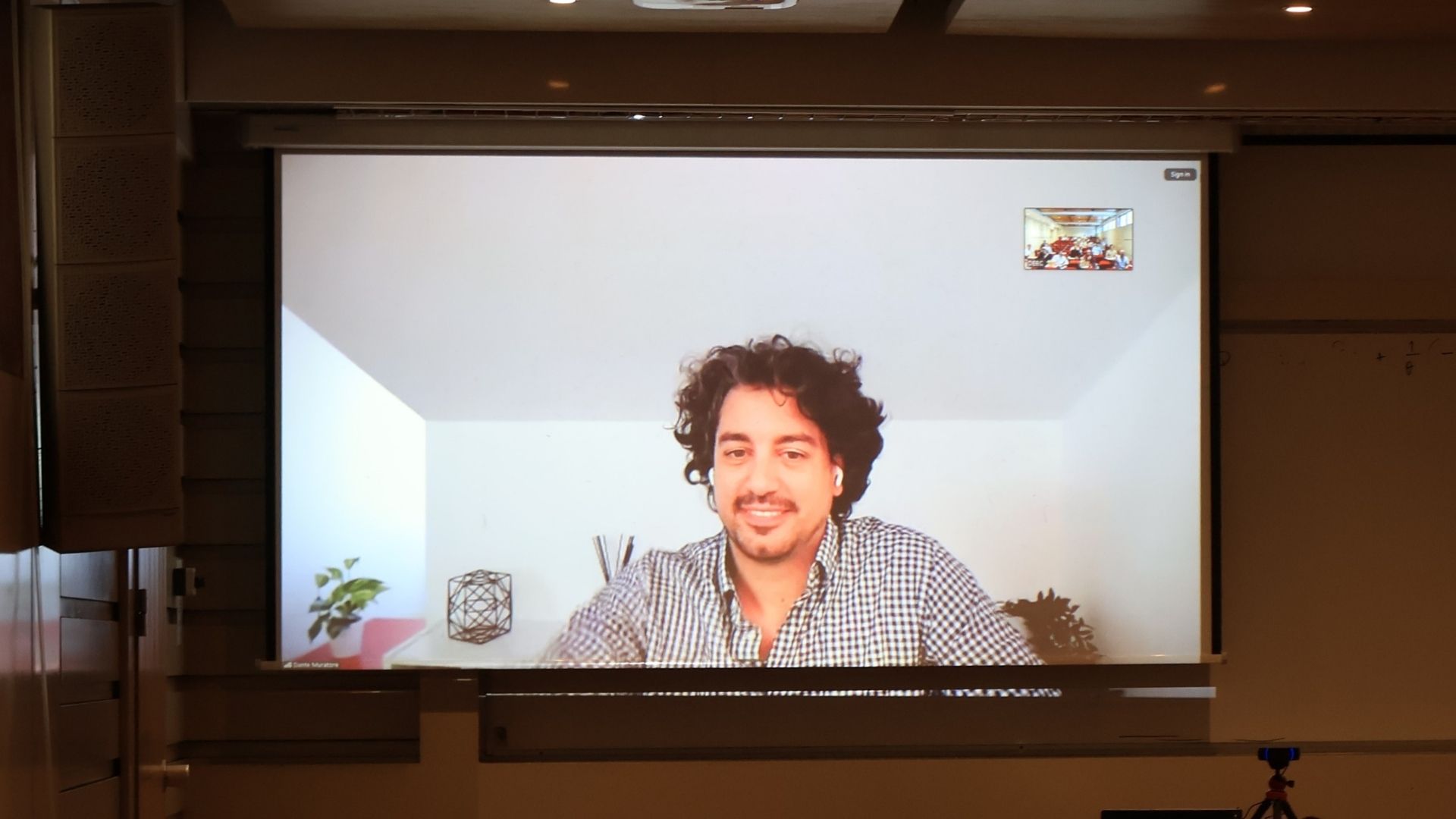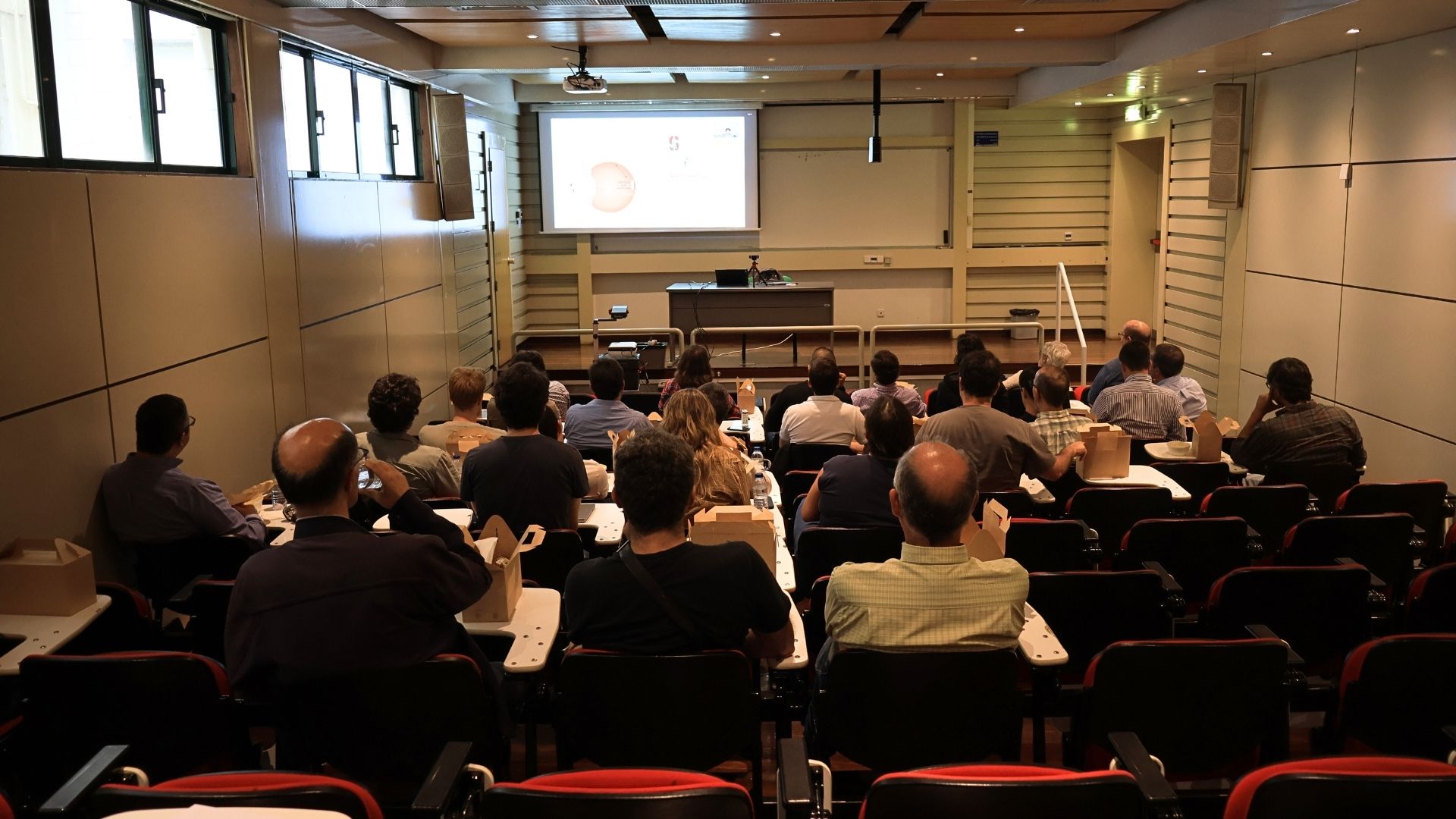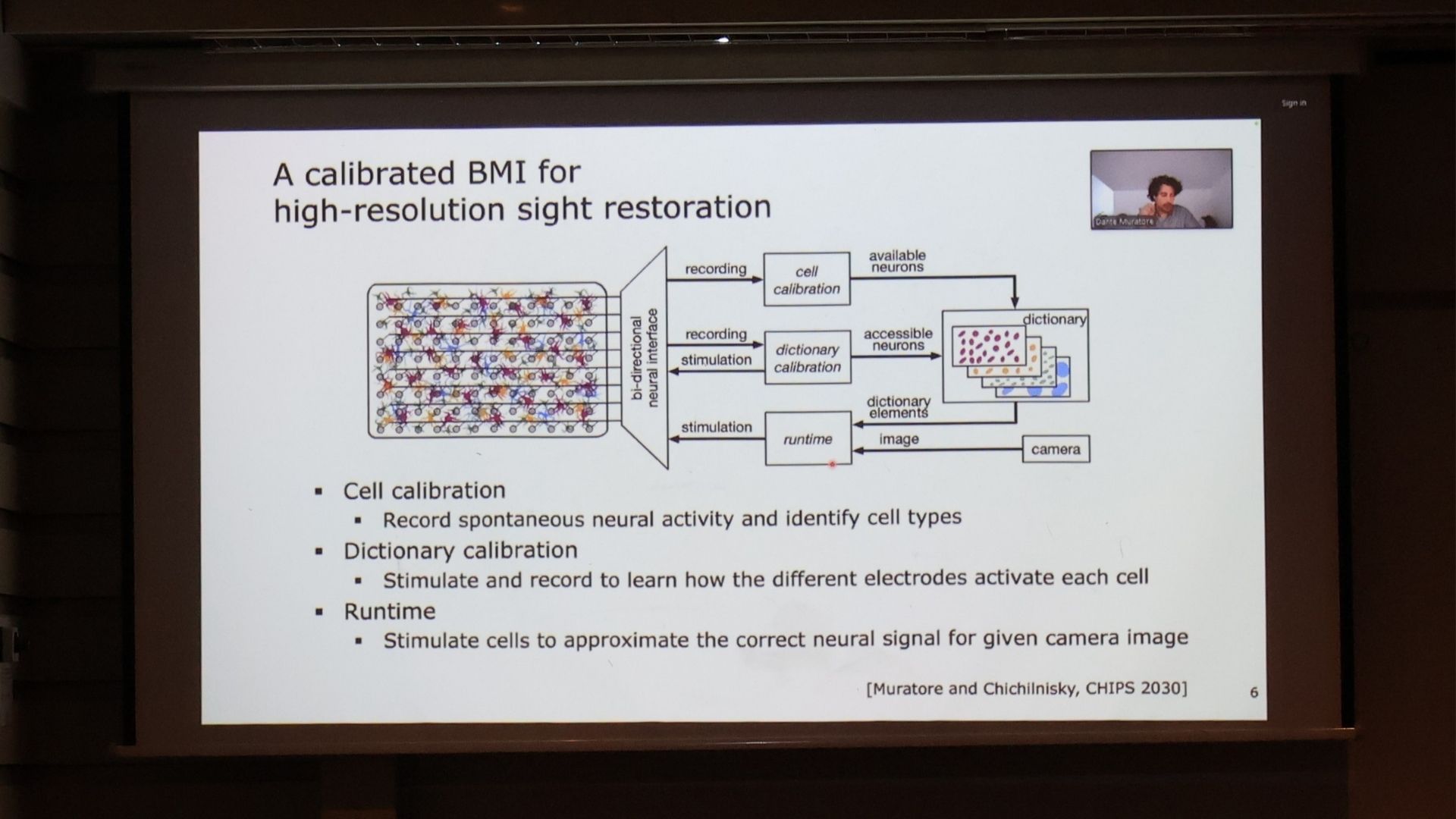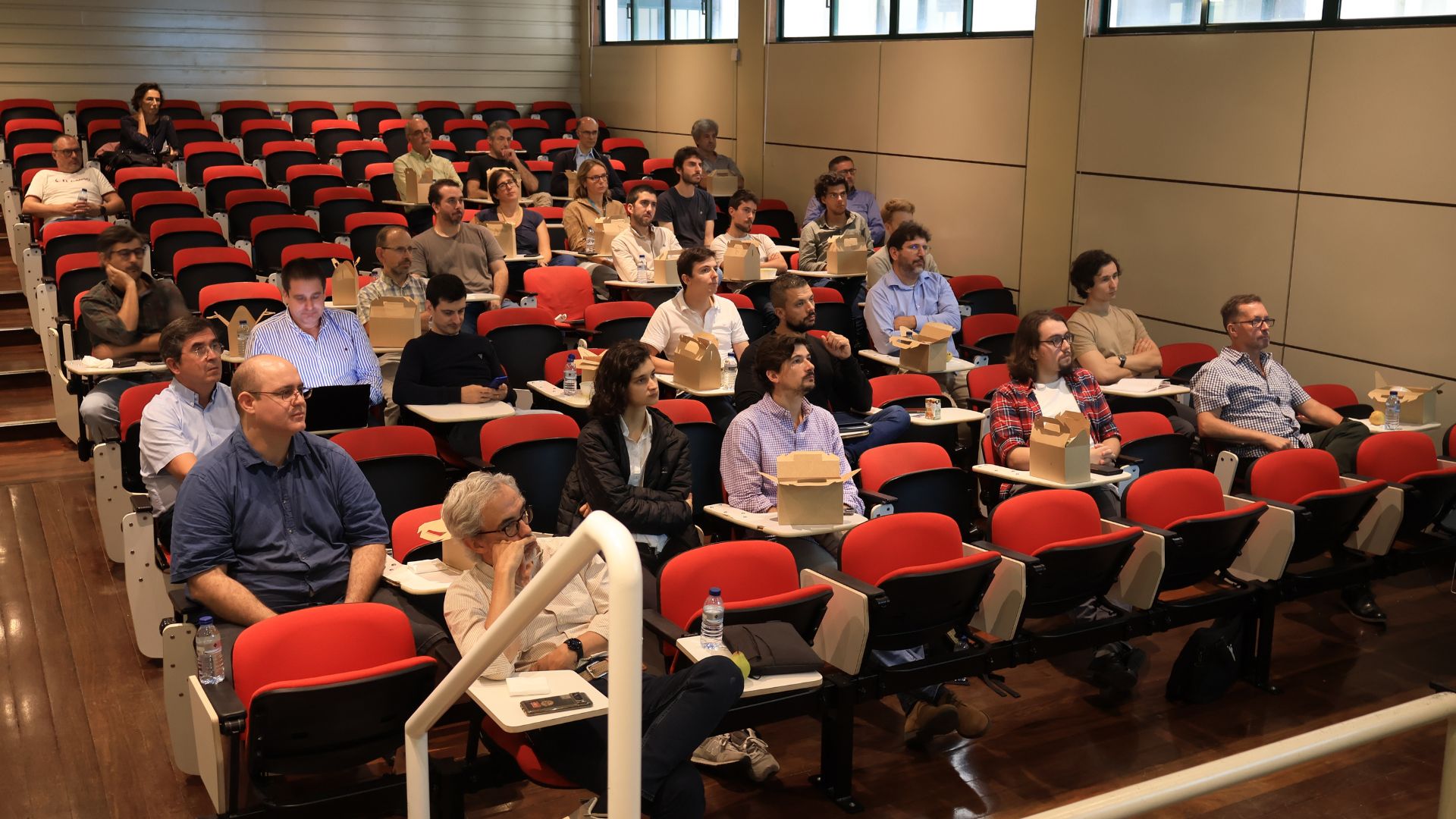DEEC TALK: Implantable Electronics for a High Fidelity Artificial Retina

On October 22, Dante Muratore, Assistant Professor in the Bioelectronics Section at Delft University of Technology, presented part of his research on the development of electronic devices for restoring vision in blind individuals.
The lecture began with the introduction of the speaker by Sérgio Pequito, Vice President of Research, Development, and External Relations.

Vision loss can result from various factors, including the degeneration of photoreceptor cells, which are responsible for detecting light and converting it into nerve impulses that the brain interprets as images. When the deeper neuronal layers of the retina remain intact, it becomes possible to implant an electronic device with a bidirectional interface, a chip that connects a camera to the neurons. In this way, the neurons are artificially stimulated, minimising the loss of visual information.
To achieve this artificial stimulation, Dante Muratore compares the function of neurons to an orchestra: to create music, it is necessary to know the different instruments and how to control them. In human biology, researchers must respect the natural neuronal code, taking into account how many neurons need to be activated (scale), the precision with which the chip interacts with the system (resolution), and its adaptation to the neural tissue (adaptability), ensuring the device’s efficiency.
Additionally, the final image depends on which neurons are stimulated. For this reason, it is also necessary to create a “dictionary”, compiling the types of responses of different neurons to stimulation.

To obtain the desired image, the system must be calibrated according to the neural tissue’s response. The BMI (Brain-Machine Interface) calibration, used by Dante Muratore’s research group, involves the process by which the chip determines how neuronal tissue reacts to electrical impulses: the chip sends signals through electrodes, measures, and records the nervous system’s responses. This process is repeated until the correct parameters for each impulse are found, including frequency, amplitude, duration, and stimulus location—that is, which type of electrode to use and which cells to target.
The researcher emphasized that it is necessary to identify the exact location and timing of the stimulus, as stimulating neurons that are too close together may lead to unexpected or incorrect responses, compromising the creation of the intended image. Spatial and temporal planning helps prevent overlapping stimuli (collisions).

During the lecture, Dante Muratore also discussed topics such as signal characteristics and the chip’s energy management.
The session concluded with questions from the attending faculty members.
